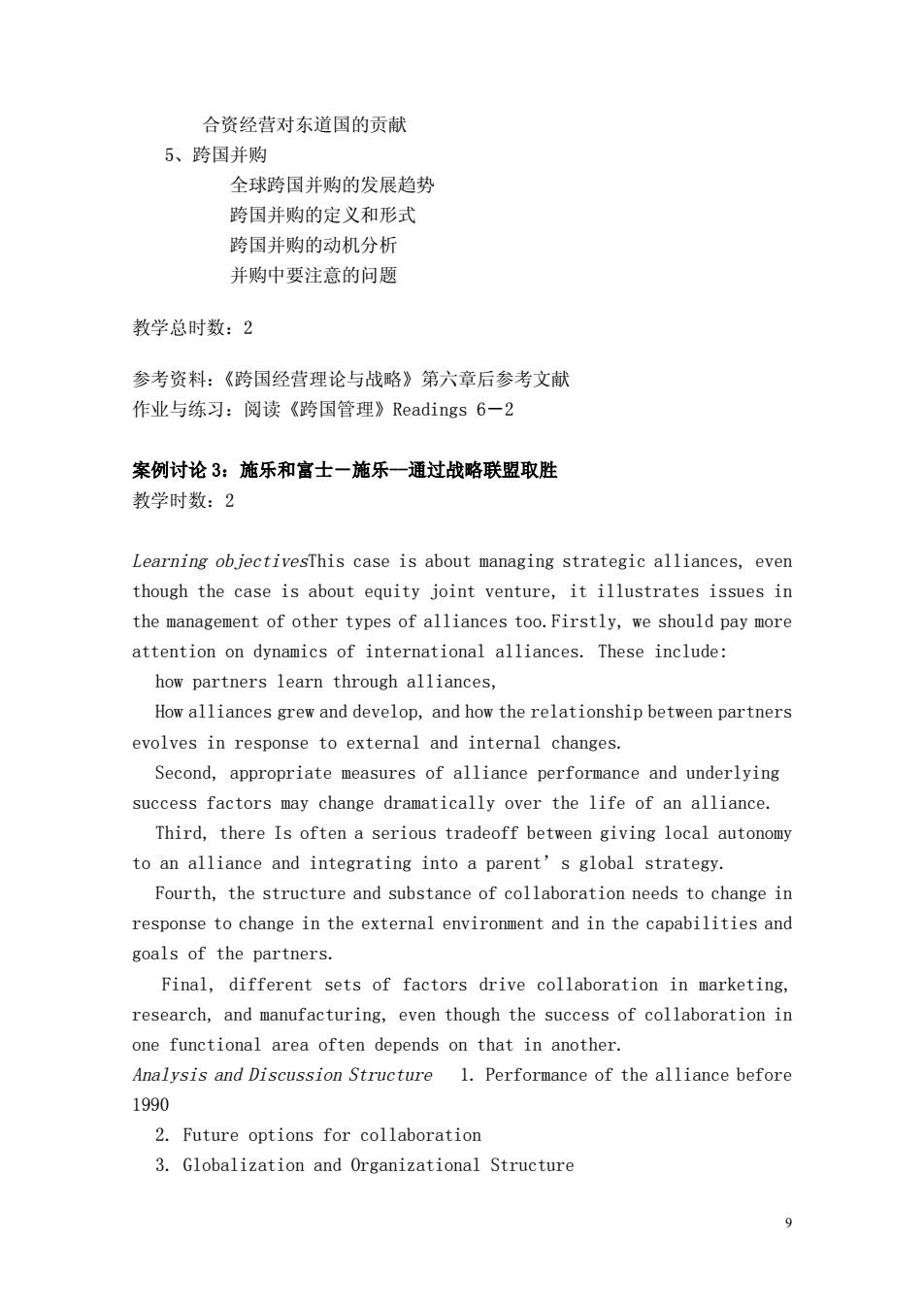正在加载图片...

合资经营对东道国的贡献 5、跨国并购 全球跨国并购的发展趋势 跨国并购的定义和形式 跨国并购的动机分析 并购中要注意的问题 教学总时数:2 参考资料:《跨国经营理论与战略》第六章后参考文献 作业与练习:阅读《跨国管理》Readings6-2 案例讨论3:施乐和富士一施乐一通过战略联盟取胜 教学时数:2 Learning objectivesThis case is about managing strategic alliances,even though the case is about equity joint venture,it illustrates issues in the management of other types of alliances too.Firstly,we should pay more attention on dynamics of international alliances.These include: how partners learn through alliances, How alliances grew and develop,and how the relationship between partners evolves in response to external and internal changes. Second,appropriate measures of alliance performance and underlying success factors may change dramatically over the life of an alliance. Third,there Is often a serious tradeoff between giving local autonomy to an alliance and integrating into a parent's global strategy. Fourth,the structure and substance of collaboration needs to change in response to change in the external environment and in the capabilities and goals of the partners. Final,different sets of factors drive collaboration in marketing, research,and manufacturing,even though the success of collaboration in one functional area often depends on that in another. Analysis and Discussion Structure 1.Performance of the alliance before 1990 2.Future options for collaboration 3.Globalization and Organizational Structure9 合资经营对东道国的贡献 5、跨国并购 全球跨国并购的发展趋势 跨国并购的定义和形式 跨国并购的动机分析 并购中要注意的问题 教学总时数:2 参考资料:《跨国经营理论与战略》第六章后参考文献 作业与练习:阅读《跨国管理》Readings 6-2 案例讨论 3:施乐和富士-施乐--通过战略联盟取胜 教学时数:2 Learning objectivesThis case is about managing strategic alliances, even though the case is about equity joint venture, it illustrates issues in the management of other types of alliances too.Firstly, we should pay more attention on dynamics of international alliances. These include: how partners learn through alliances, How alliances grew and develop, and how the relationship between partners evolves in response to external and internal changes. Second, appropriate measures of alliance performance and underlying success factors may change dramatically over the life of an alliance. Third, there Is often a serious tradeoff between giving local autonomy to an alliance and integrating into a parent’s global strategy. Fourth, the structure and substance of collaboration needs to change in response to change in the external environment and in the capabilities and goals of the partners. Final, different sets of factors drive collaboration in marketing, research, and manufacturing, even though the success of collaboration in one functional area often depends on that in another. Analysis and Discussion Structure 1. Performance of the alliance before 1990 2. Future options for collaboration 3. Globalization and Organizational Structure